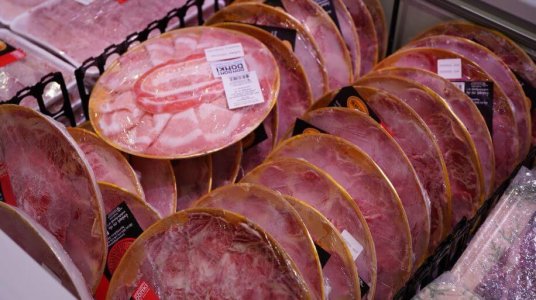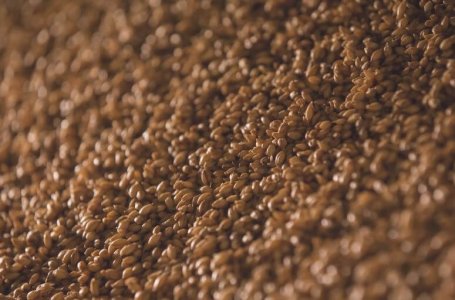Score big savings on groceries – here's what's dropping in price
- Replies 17
In these uncertain economic times, it's more important than ever to save where you can – especially when it comes to your weekly grocery shop.
So, if your household budget has taken a hit, we have some good news! Despite disruptions to supply chains, some of your favourite grocery items could actually become cheaper this year.
Households struggling to keep up with the rising cost of living can expect ‘relief’ when paying for some of their grocery items, as industry experts revealed that prices would continue to drop further this year.
They shared that price falls can be expected for meat, poultry, and grain, while some fruit and vegetable costs will remain low.
This announcement comes after multiple claims that the prices of some items in stores such as Coles and Woolworths have changed, despite being included under the supermarkets’ ‘prices dropped’ programs.
Shoppers from both retailers flooded their social media pages with questions and strong opinions about why there were a string of ‘price hikes’ in their stores – with many calling it ‘mind-boggling’. You can read more details about this story here.
According to the National Farmers Federation (NFF), there’s been a strong supply of produce to markets, including berries, avocados, and lettuce. They also reassured everyone that these prices would not increase further.
NFF Horticulture Council Executive Officer Richard Shannon said this is ‘great news for customers’.
‘Over the last couple of years, we’ve seen dramatic increases in the cost of production. That’s a result of disrupted supply chains,’ he continued, referring to the massive floods the country experienced last year, as well as the increased prices of fertiliser, packaging, and farm labour.
Mr Shannon said that some of these supply chains have started to open up again.
A weekly supermarket report from Avocados Australia highlighted that the price of a single avocado ranged from $1.80 to $3, depending on the variety.
John Tyas, CEO of Avocados Australia, said customers could expect prices to stay this low as avocado supply has increased by 10 per cent. He said: ‘We’re expecting pretty steady supply through to the end of the year.’
Meanwhile, lettuce, which was being sold at $12 a head last year – four times its usual price – is now selling at $3.50 in some stores.
AUSVEG, the prescribed peak industry body for the Australian vegetable and potato industries, stated that the prices of winter vegetables such as carrots, pumpkins, lettuce, celery and beans would also become cheaper as they come into season. Industry experts from AUSVEG said this was due to a strong supply.
Other retail experts predict that meat and poultry prices will come down after having peaked last year.
‘With growing conditions improving, we’ll start to see more supply into the market, and accordingly, prices will fall,’ Marketing and Consumer Behaviour Expert Gary Mortimer said before adding that farmers (mostly in central NSW) have recovered after two years of drought and that there was more grain to feed their livestock now.
The Meat and Livestock Australia (MLA) has recently reported a major boost to the national sheep flock, with an estimated 78.75 million head – the highest number since 2007. With this in mind, Aussies can expect an increased supply to the domestic market.
The Australian Bureau of Agricultural and Resource Economics and Sciences (ABARES) also forecasted that sheep and lamb prices would fall because ‘farmers had rebuilt their flocks’, and there were more animals available for slaughter.
However, it is still up to the supermarkets if they decide to pass on any price drops to customers. You can read more about this story here.
ABARES’ latest agricultural report also revealed: ‘Industry production and export values are forecast to hit record levels in 2022-23, with broadacre and dairy farm cash incomes remaining well above historical benchmarks.’
Dr Jared Greenville, Executive Director for ABARES, said that good performance would likely continue into the foreseeable future. This is because weather patterns were expected to ‘shift back to normal’ after years of high rainfall in some regions of the country.
He explained: ‘Despite the deteriorating conditions, strong soil moisture, full water storages and the rebuilding of our herds and flocks will provide a buffer for overall production, giving us another year in the high country.’
 How do you feel about this news? Do you have any tips for making the most of your grocery budget? Share them with other members below!
How do you feel about this news? Do you have any tips for making the most of your grocery budget? Share them with other members below!
So, if your household budget has taken a hit, we have some good news! Despite disruptions to supply chains, some of your favourite grocery items could actually become cheaper this year.
Households struggling to keep up with the rising cost of living can expect ‘relief’ when paying for some of their grocery items, as industry experts revealed that prices would continue to drop further this year.
They shared that price falls can be expected for meat, poultry, and grain, while some fruit and vegetable costs will remain low.
This announcement comes after multiple claims that the prices of some items in stores such as Coles and Woolworths have changed, despite being included under the supermarkets’ ‘prices dropped’ programs.
Shoppers from both retailers flooded their social media pages with questions and strong opinions about why there were a string of ‘price hikes’ in their stores – with many calling it ‘mind-boggling’. You can read more details about this story here.
According to the National Farmers Federation (NFF), there’s been a strong supply of produce to markets, including berries, avocados, and lettuce. They also reassured everyone that these prices would not increase further.
NFF Horticulture Council Executive Officer Richard Shannon said this is ‘great news for customers’.
‘Over the last couple of years, we’ve seen dramatic increases in the cost of production. That’s a result of disrupted supply chains,’ he continued, referring to the massive floods the country experienced last year, as well as the increased prices of fertiliser, packaging, and farm labour.
Mr Shannon said that some of these supply chains have started to open up again.
A weekly supermarket report from Avocados Australia highlighted that the price of a single avocado ranged from $1.80 to $3, depending on the variety.
John Tyas, CEO of Avocados Australia, said customers could expect prices to stay this low as avocado supply has increased by 10 per cent. He said: ‘We’re expecting pretty steady supply through to the end of the year.’
Meanwhile, lettuce, which was being sold at $12 a head last year – four times its usual price – is now selling at $3.50 in some stores.
AUSVEG, the prescribed peak industry body for the Australian vegetable and potato industries, stated that the prices of winter vegetables such as carrots, pumpkins, lettuce, celery and beans would also become cheaper as they come into season. Industry experts from AUSVEG said this was due to a strong supply.
Other retail experts predict that meat and poultry prices will come down after having peaked last year.
‘With growing conditions improving, we’ll start to see more supply into the market, and accordingly, prices will fall,’ Marketing and Consumer Behaviour Expert Gary Mortimer said before adding that farmers (mostly in central NSW) have recovered after two years of drought and that there was more grain to feed their livestock now.
The Meat and Livestock Australia (MLA) has recently reported a major boost to the national sheep flock, with an estimated 78.75 million head – the highest number since 2007. With this in mind, Aussies can expect an increased supply to the domestic market.
The Australian Bureau of Agricultural and Resource Economics and Sciences (ABARES) also forecasted that sheep and lamb prices would fall because ‘farmers had rebuilt their flocks’, and there were more animals available for slaughter.
However, it is still up to the supermarkets if they decide to pass on any price drops to customers. You can read more about this story here.
ABARES’ latest agricultural report also revealed: ‘Industry production and export values are forecast to hit record levels in 2022-23, with broadacre and dairy farm cash incomes remaining well above historical benchmarks.’
Dr Jared Greenville, Executive Director for ABARES, said that good performance would likely continue into the foreseeable future. This is because weather patterns were expected to ‘shift back to normal’ after years of high rainfall in some regions of the country.
He explained: ‘Despite the deteriorating conditions, strong soil moisture, full water storages and the rebuilding of our herds and flocks will provide a buffer for overall production, giving us another year in the high country.’
Key Takeaways
- Industry experts say price decreases are coming for meat, poultry, and grain, while some fruit and vegetable costs remain low.
- The National Farmers Federation says there’s been a strong supply of berries, avocados and lettuce to markets, and the prices will not increase further.
- Customers can expect prices for avocados, lettuce, carrots, pumpkin, celery and beans to become cheaper as they come into season, thanks to a strong supply.
- Retail experts predict that the price of meat and poultry will come down after having peaked in 2022, and Australian farmers are said to have rebuilt their herds and flocks.









